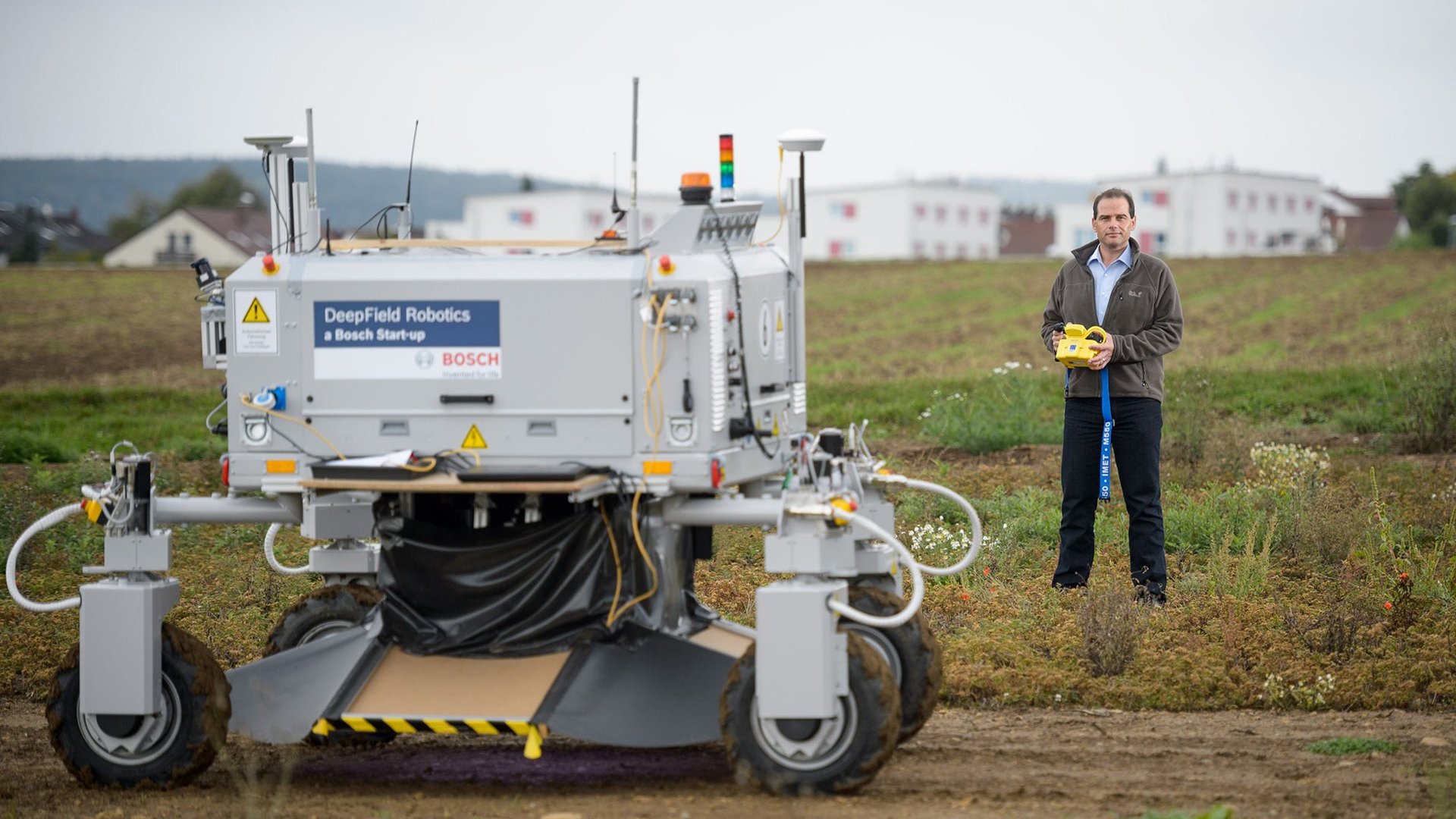This robot kills weeds, and could end the need for herbicides on farms
The robots have learned how to kill. Thankfully, for now, that killing is confined to weeds in fields. A new robot from Bosch, the German company best known for making power tools and car parts, can travel through crop fields, learn what weeds look like, and crush them.


The robots have learned how to kill. Thankfully, for now, that killing is confined to weeds in fields. A new robot from Bosch, the German company best known for making power tools and car parts, can travel through crop fields, learn what weeds look like, and crush them.
The robot, called the BoniRob, is the result of research by Bosch’s Deepfield Robotics division, in partnership with the German food and agriculture department, Osnabrück University, and Amazone, an agricultural machinery manufacturer. According to Popular Mechanics, the robot can identify targets with such speed, it’s almost impossible to see how quickly it can pound weeds into the earth.
BoniRob has a device about 1 cm (0.4 inches) wide that can stamp small weeds down. For bigger weeds, it just stamps a few more times, and it can manage to kill nearly two weeds a second. According to Bosch, the robot is about the size of a small car, and uses the same type of laser-radar vision system that Google’s self-driving cars use to navigate the world. BoniRob is programmed by being shown pictures of leaves from plants farmers want to harvest and weeds. Using machine learning—a form of artificial intelligence that allows it to make decisions based on what it’s been shown—it applies its knowledge to what it sees when it’s in the field, stamping down only on the weeds it’s been asked to kill. BoniRob could potentially rid farms of the need to use herbicides or other weed killers on crops, which have been seen as potentially harmful to humans.
Machine learning systems get better with more data, so with each new weed or plant it sees, BoniRob refines its notion of what each of them are, getting a little better at doing its job each time. In tests on carrot patches, BoniRob stamped out about 90% of weeds, according to Popular Science.
BoniRob is currently being tested on real farmland, and IEEE Spectrum says that it can run autonomously for about 24 hours before it runs out of gas. Bosch intends to rent or sell the robot to farmers looking to cut down on manual labor costs. According to the company, farmers today can harvest about three times what they could from the same amount of land in the 1950s, and as the population continues to increase, we’ll have to find new ways to keep growing crops efficiently and safely.
In the future, swarms of self-driving BoniRobs and harvesting robots could be all that’s needed to harvest our food. Once self-driving trucks can bring the produce to stores, and self-driving robots can stack it on our shelves, we’ll be able to have a completely self-driven robot farm-to-table meal. Future hipsters will be ecstatic.